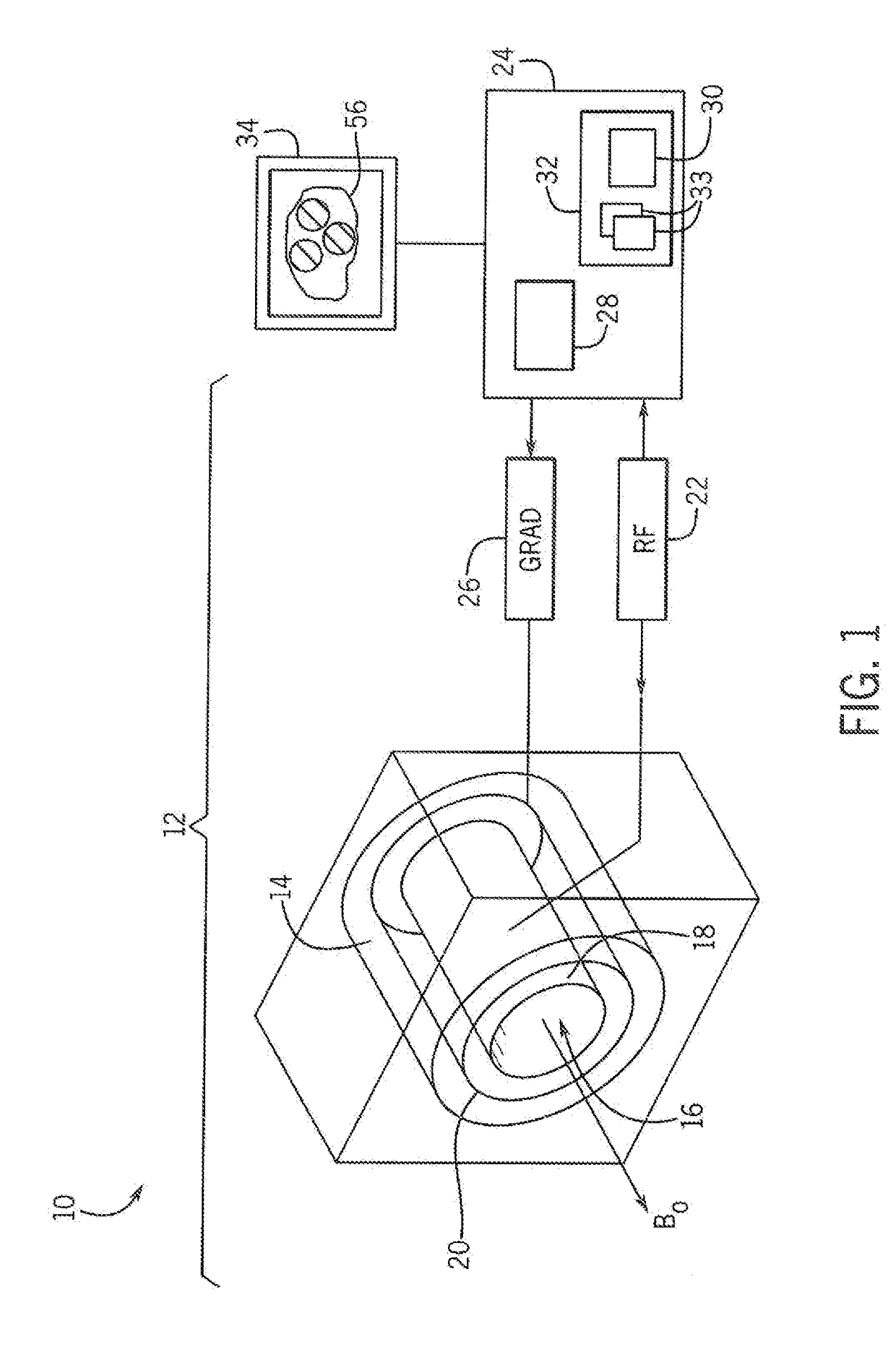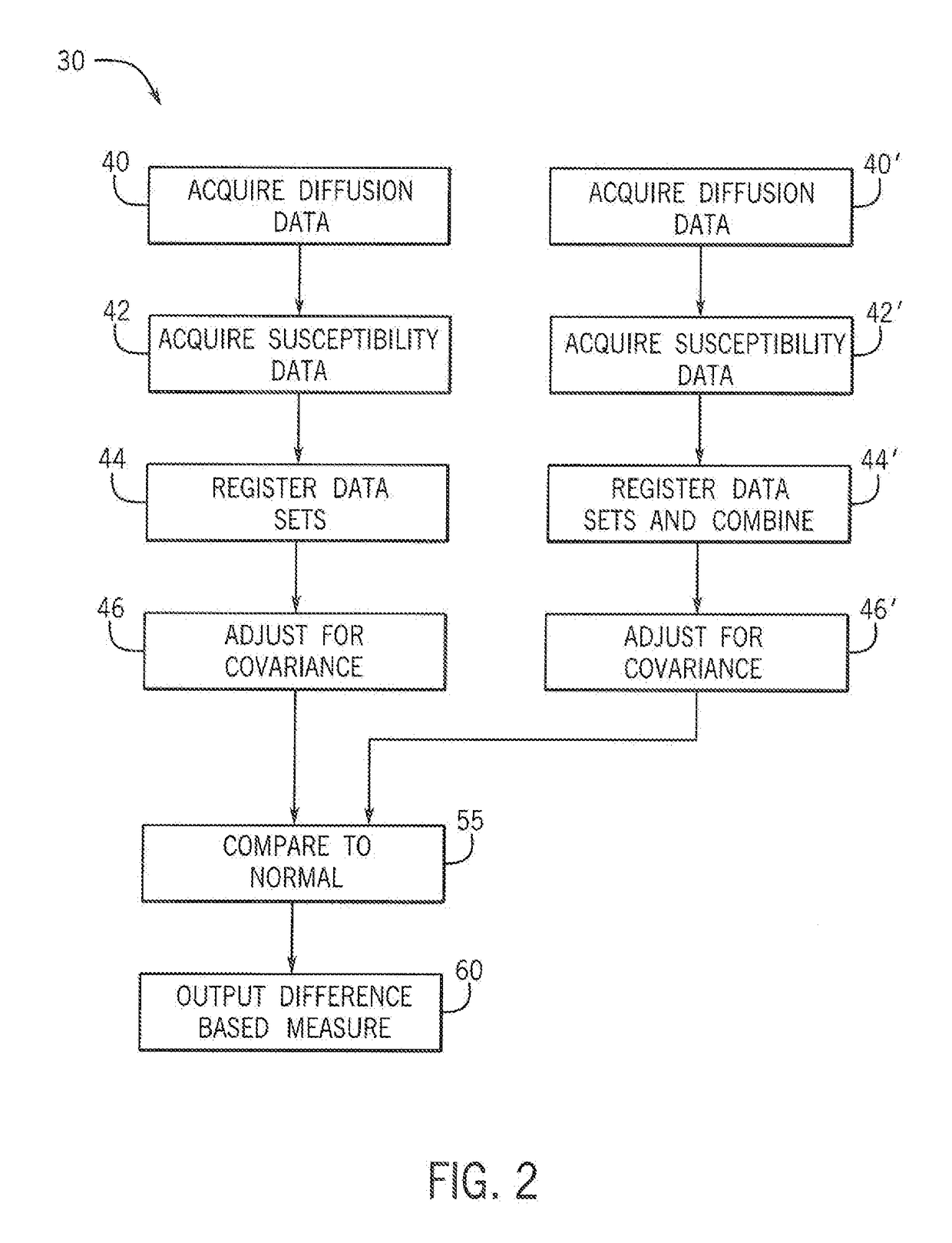System for Characterizing Brain Condition
a brain condition and diagnostic apparatus technology, applied in the field of brain condition diagnostic apparatus and method, can solve the problems of affecting the accuracy of brain traumatizing quantitative measures, disrupting the path of water diffusion associated with white matter neural tracts, and largely unsuccessful diagnostic tools such as ct and mri imaging to characterize brain abnormalities associated with such injuries. , to achieve the effect of robust and sensitive measurement of brain trauma
- Summary
- Abstract
- Description
- Claims
- Application Information
AI Technical Summary
Benefits of technology
Problems solved by technology
Method used
Image
Examples
example i
[0054]A pilot study of this technique was conducted using forty-four patients with mild traumatic brain injury and sixteen control patients without traumatic brain injury. The acquired MRI data of each of these patients was used to determine fractional anisotropy, mean diffusivity, axial diffusivity, and radial diffusivity for a variety of standard anatomical brain segments. Notably, fractional anisotropy values both increased and decreased in particular anatomical segments for patients with traumatic brain injury and either increased or decreased in only twenty-five out of forty-four cases. Similarly mean diffusion both increased and decreased in patients with traumatic brain injury, either increasing or decreasing in only fifteen out of the forty-four traumatic brain injury cases.
[0055]All forty-four traumatic brain injury patients were identifiable as having a Mahalanobis distance 54 of greater than two with respect to the normal and thirty out of the forty-four traumatic brain i...
PUM
 Login to View More
Login to View More Abstract
Description
Claims
Application Information
 Login to View More
Login to View More - R&D
- Intellectual Property
- Life Sciences
- Materials
- Tech Scout
- Unparalleled Data Quality
- Higher Quality Content
- 60% Fewer Hallucinations
Browse by: Latest US Patents, China's latest patents, Technical Efficacy Thesaurus, Application Domain, Technology Topic, Popular Technical Reports.
© 2025 PatSnap. All rights reserved.Legal|Privacy policy|Modern Slavery Act Transparency Statement|Sitemap|About US| Contact US: help@patsnap.com



